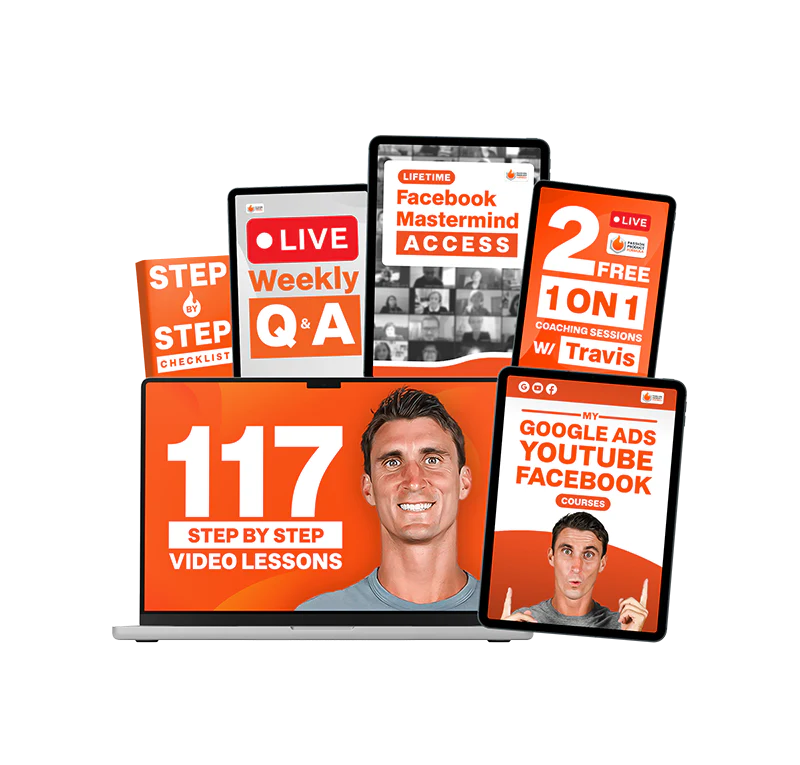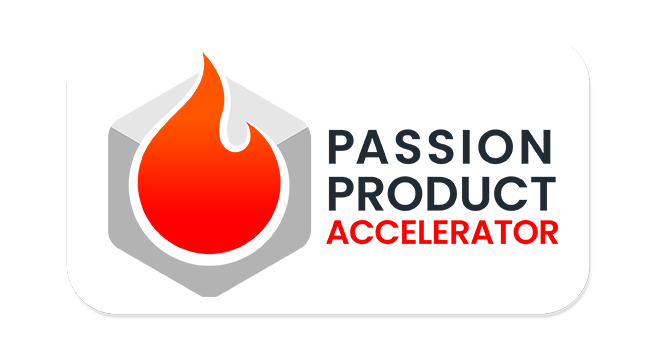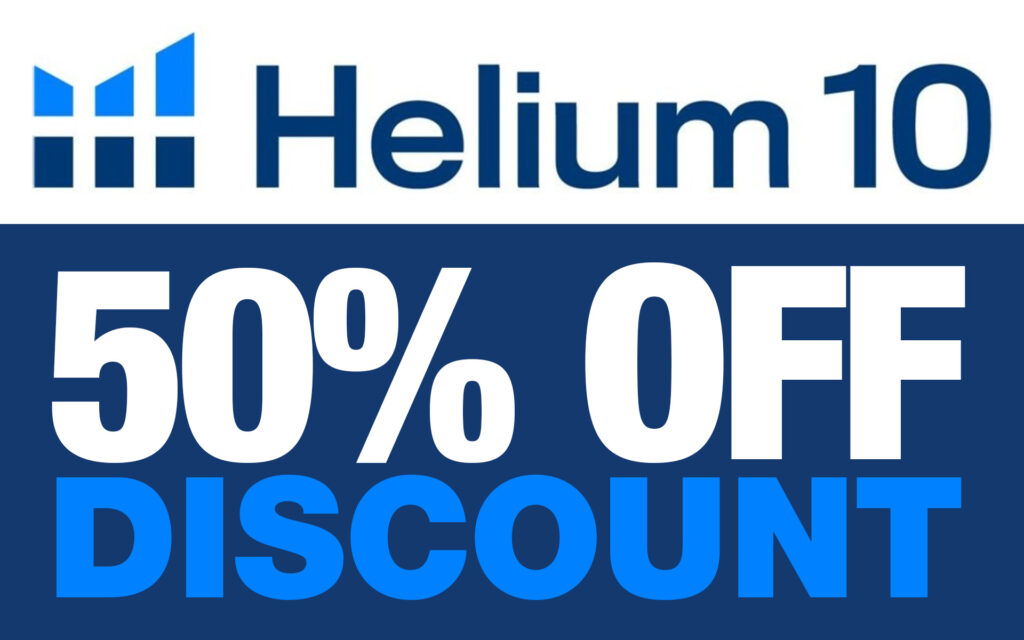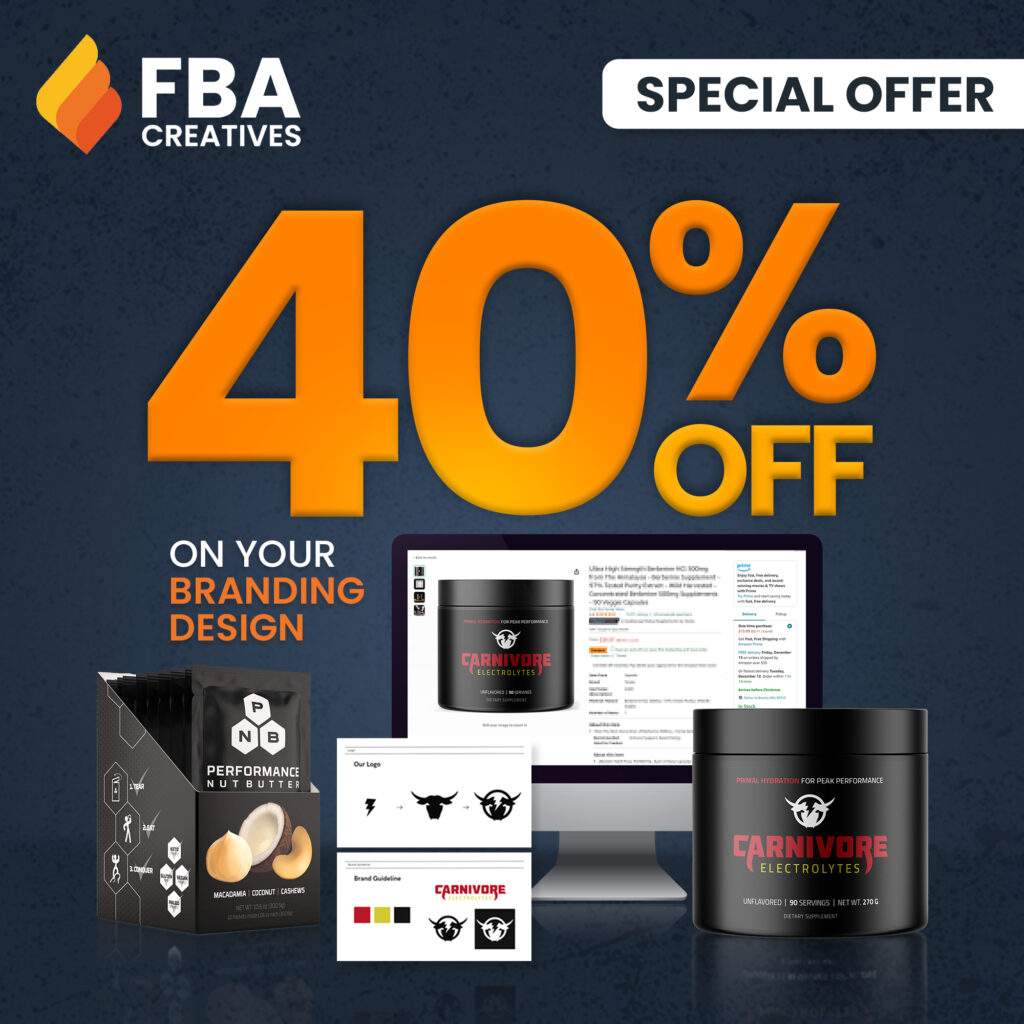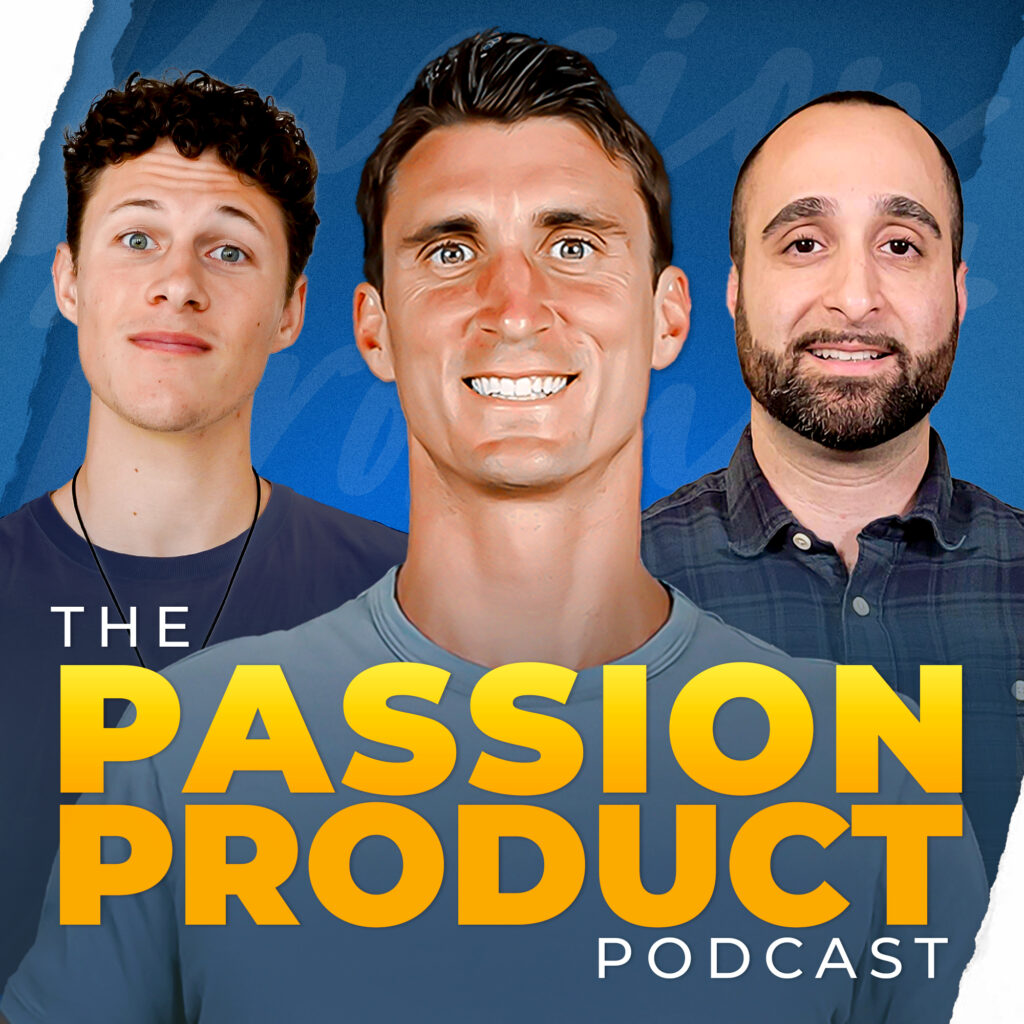Have you ever wondered how some Amazon FBA sellers seemingly create magic with their product listings while others struggle to get even a handful of sales? Rafael Voss certainly cracked the code, and his story is nothing short of inspiring. This filmmaker turned e-commerce entrepreneur left law school to pursue his passion. He ended up making over $238,000 selling chocolate chip cookie dough bites on Amazon FBA. His success wasn’t accidental, it was the result of understanding exactly how to create and optimize Amazon listings that convert browsers into buyers. Beyond building his own successful Amazon brand, Rafael founded Sher Studio, an expert Amazon marketing agency. He learned many of his strategies from Travis’s channels and now shares his hard-won insights with aspiring entrepreneurs.
The challenge most aspiring Amazon FBA sellers face isn’t just getting their products listed on the platform. Anyone can upload a product and call it a day. The real struggle lies in creating listings that actually convert viewers into paying customers. Your listing needs to be discovered by the right people, grab their attention immediately, and convince them that your product is exactly what they need. Fortunately, Rafael has broken down this seemingly complex process into a simple two-stage approach that anyone can follow.
Throughout this comprehensive guide, you’ll discover the exact strategies Rafael used to build his six-figure Amazon business. From the technical setup of your first listing to advanced optimization techniques that skyrocket conversion rates, we’re covering everything you need to know. Moreover, you’ll learn from real case studies, including the transformation of Pink Miracle. This brand was already ranking number one but managed to explode their sales even further through strategic listing improvements. Whether you’re launching your first product or looking to improve existing listings, this proven framework will transform your Amazon business.

Stage One: Creating Your Amazon Listing

Getting Started: The Initial Setup
Creating your Amazon listing begins with a simple visit to sell.amazon.com. You’ll log into your seller account and navigate through a straightforward process. Once logged in, click on the three lines in the menu, select “catalog,” and then choose “add products.” At this point, Amazon presents you with two distinct paths. You can either sell a product that already has a listing on the platform or launch something completely unique.
If you’re looking to sell an existing product that’s already listed on Amazon, the process is incredibly simple. You’ll search for that product, select its condition, and click “sell this product.” Then you’ll input basic information like your inventory quantity and pricing. However, launching your own unique Amazon product represents a far more exciting opportunity. This path allows you to build a brand rather than just reselling someone else’s products.
For those ready to launch something truly their own, clicking on “blank form” opens up a world of possibilities. This is where the real entrepreneurial journey begins. Consequently, this is where most of the strategic work comes into play. The blank form approach requires more effort upfront, but it also provides complete control over your brand identity and profit margins.
Transitioning from setup to strategy, the first critical decision you’ll make is naming your product. This isn’t simply about choosing a catchy title. It’s about understanding how Amazon’s search algorithm works and positioning your product for maximum visibility right from the start.
Crafting Your Product Title: The Keyword Foundation

Understanding that Amazon functions primarily as a search engine fundamentally changes how you approach creating your listing. When customers need a product, they type specific words into the Amazon search bar. They expect relevant results to appear instantly. Your listing needs to show up in those search results. This means incorporating the exact words and phrases your potential customers are actually using.
These search terms are called keywords. Discovering the right ones transforms your listing from invisible to unavoidable. Tools like Helium 10’s Magnet allow you to peek behind the curtain. You can see exactly what thousands of people are typing into Amazon FBA every single month. For instance, when Travis researched berberine tea using this tool, he discovered that over 4,000 people per month were searching specifically for that term. Additionally, the tool revealed dozens of related search phrases that customers were using. This gave him valuable ammunition for his title and bullet points.
Rafael applied this same keyword research strategy when launching his chocolate chip cookie dough bites. Through thorough research, he identified that customers were searching for terms like “edible,” “edible cookie dough,” “cookie candy,” and “egg-free.” These weren’t just random words, they represented the exact language his target customers used when shopping. By strategically incorporating these keywords into his title and bullet points, he dramatically increased his product’s visibility in search results.
The final title Rafael created followed a specific formula: brand name plus all the most important keywords. His complete title read: “Cookie Dough Bites Candy with Raw Edible Cookie Dough in Value Size 10.5 Ounces Chip Flavor One Bag.” Notice how this title packs in maximum information while still reading naturally. It tells customers exactly what they’re getting and includes multiple searchable keywords. It provides specific details about size and quantity. Your goal should always be giving as much relevant information as possible while maintaining readability.
Selecting the Right Category
After crafting your keyword-optimized title, Amazon needs to know where your product belongs within its massive catalog. The platform will typically suggest a category based on the information you’ve provided. However, accepting this suggestion without investigation can be a costly mistake. Instead, savvy sellers research their competitors to discover whether a different category might offer better visibility and less competition.
Rafael’s example with Travis’s berberine tea perfectly illustrates this strategic thinking. Rather than accepting the first category suggestion, they carefully selected Grocery and Gourmet Foods. Then they narrowed down through Beverages, then Tea, then Fruit and Herbal Tea, and finally landed on Herbal. This specific categorization might seem tedious, but it ensures your product appears exactly where your target customers are browsing.
Category selection directly impacts your product’s discoverability. Many Amazon shoppers browse by category rather than searching with keywords. Furthermore, being properly categorized helps Amazon’s algorithm understand your product better. This can improve your rankings in both search results and category pages. Taking a few extra minutes to get this right pays dividends for months and years to come.
Transitioning to the next critical details, Amazon FBA also needs some technical information about your product. Understanding variations, brand information, and product codes ensures your listing meets Amazon’s requirements. It also sets you up for future expansion opportunities.
Product Variations and Brand Information
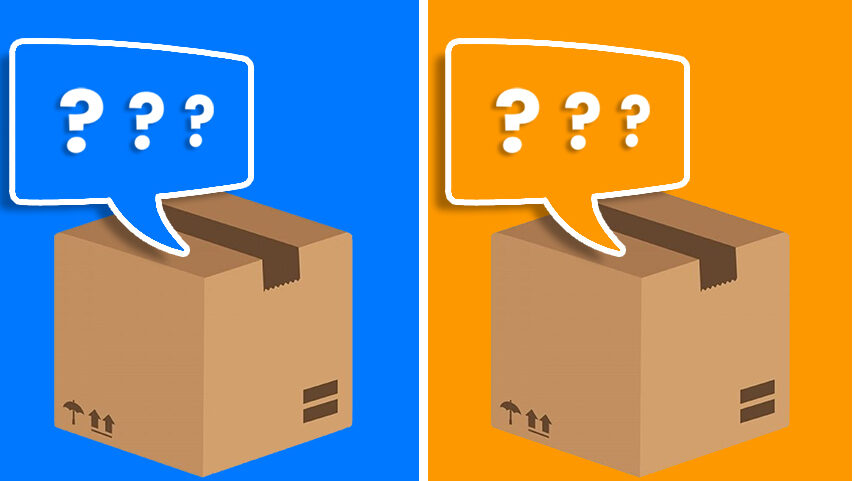
Product variations allow you to offer multiple options of the same item under a single listing. This streamlines the shopping experience and consolidates your reviews. If your product comes in different flavors, colors, or sizes, you’ll want to set these up as variations. For Rafael’s chocolate chip cookie dough bites, variations weren’t necessary since he was offering a single flavor. However, this feature becomes invaluable if you plan to expand your product line later.
Next, you’ll enter your brand name. This should be consistent across all your products and marketing materials. Building brand recognition on Amazon creates customer loyalty and helps you stand out in a crowded marketplace. Your brand becomes your identity. It makes it easier for satisfied customers to find you again and recommend you to others.
Then comes the external product ID, which most sellers handle using a UPC (Universal Product Code). This barcode is the same one that gets scanned at grocery stores and retailers worldwide. You can obtain your official UPC code through gs1.org, the global standard for product identification. While some sellers cut corners by buying UPC codes from third-party resellers, obtaining them from the official source protects you from potential issues down the road.
With these foundational elements complete, you’ll click “next” to move into what many consider the most important part of creating your listing. This is where you’ll craft the persuasive content that actually convinces customers to click that “add to cart” button.
Bullet Points: Your Persuasion Engine
Your bullet points serve as your primary sales tool. They give you up to five opportunities to convince shoppers that your product solves their specific problems. This is where you’ll incorporate those secondary keywords you discovered during your research. More importantly, this is where you focus on benefits rather than just features. Customers don’t buy products, they buy solutions to their problems and improvements to their lives.
Rafael’s bullet points for his cookie dough bites exemplify this benefits-focused approach perfectly. Rather than simply listing ingredients or package dimensions, he made sure to include that the product was great for movies. He highlighted that it was perfect as ice cream toppings and ideal for parties. These usage scenarios help customers visualize exactly how the product fits into their lives. Each bullet point should paint a picture of the positive experience customers will have after purchasing.
When crafting your bullet points, think about the questions your ideal customer might have. Consider the objections they might raise. Address these preemptively while weaving in your researched keywords naturally. The goal is making your bullet points both search-engine friendly and human-readable. This requires a delicate balance between optimization and persuasion.
Getting Expert Help with Your Listing
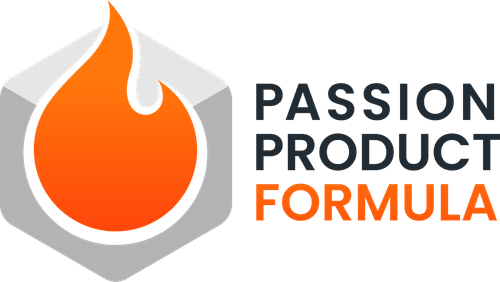
If you’re feeling overwhelmed by all these optimization strategies, you’re not alone. Most new Amazon FBA sellers experience information overload at this stage. Fortunately, comprehensive training programs like Travis’s Passion Product Formula provide the step-by-step guidance you need. With over 100 detailed lessons, weekly Q&A calls where you can get personalized answers to your specific questions, and a supportive community of fellow sellers, you’ll have all the resources necessary to launch successfully. The program takes you from complete beginner to confident Amazon entrepreneur. It covers everything in much greater depth than any single article possibly could.
Product Photos: Your First Impression
Product photography represents your first and often only chance to make a powerful impression on potential customers. When someone searches for products on Amazon, they see your main image before they read a single word of your title or bullet points. Consequently, investing in high-quality, attention-grabbing photos isn’t optional. It’s absolutely essential for success on the platform.
Rafael learned this lesson through expensive trial and error. He initially spent around $500 on photos that didn’t perform well. His first approach was launching with images provided by the manufacturer. This resulted in awful results because the images were generic and uninspiring. He then hired Spirit Creatives to optimize the listing, which improved performance but still didn’t deliver the results he wanted. Finally, by creating custom photos through his own agency, Sher Studio, he achieved the visual presentation his product deserved.
Maximizing Your Image Strategy
The key insight Rafael shares is that you should upload as many images as Amazon allows. Each one should showcase different benefits and use cases for your product. Remember that Amazon customers can’t pick up your product, touch it, or examine it in person. They can only see photos, read your title and bullet points, and compare your price to competitors. Your images must work overtime to communicate quality, value, and desirability.
Professional services like FBA Creatives (Get 40% OFF with code TRAVIS) specialize in creating Amazon listings that convert. They handle everything from your main image to your lifestyle shots to your infographics. They can even design your logo and packaging, creating a cohesive brand identity that stands out from competitors. Better yet, using the code Travis50 gives you a 50% discount on their services. This makes professional help surprisingly affordable. With your visual content dialed in, you’ll move on to crafting your product description. This serves as another opportunity to incorporate keywords and highlight benefits.
Final Setup Details

Product Description
Your product description follows the same strategic principles as your title and bullet points. It serves as yet another opportunity to incorporate valuable keywords while persuading customers to make a purchase. However, unlike the bullet points which appear prominently on your listing, the product description often requires customers to click to expand it. Therefore, you should treat it as supplementary information rather than your primary sales pitch.
Nevertheless, many customers do read the full description. This is especially true when comparing similar products or making higher-value purchases. Use this space to provide more detailed information about your product’s benefits, usage instructions, and what makes it special. Write in a conversational tone that speaks directly to your ideal customer’s needs and desires.
Incorporate keywords naturally throughout your description, but never sacrifice readability for the sake of SEO. Amazon’s algorithm is sophisticated enough to recognize keyword stuffing. More importantly, human readers will quickly abandon a description that reads like a jumbled list of search terms. Strike a balance between optimization and genuine helpfulness.
With your content complete, you’ll transition into the logistical details. These determine how your product is stored, priced, and fulfilled. These final setup steps might seem purely administrative, but they have significant implications for your profitability and customer satisfaction.
Manufacturer and Unit Information
Amazon requires you to specify who manufactured your product. This field can be filled with various information depending on your situation. If you’re working with a manufacturer directly, use their official company name. If you’re private labeling, your brand name typically suffices. This information helps Amazon categorize your product appropriately and ensures compliance with their policies.
You’ll also need to specify how many units a customer receives when they place an order. For Rafael’s chocolate chip cookie dough bites, customers received one bag per order. This made it a straightforward entry. However, if you’re selling multipacks or bundles, you’ll need to clarify exactly what constitutes one unit from the customer’s perspective.
The form changes dynamically based on your product type. You might encounter additional fields specific to your category. For consumable products like food or supplements, Amazon requires information about ingredients, storage temperature requirements, and heat sensitivity. These details protect consumers and help Amazon handle your inventory appropriately.
Accurately completing these technical details prevents delays in getting your listing approved. It ensures smooth operations once orders start flowing. Taking the extra time to double-check each field saves headaches later and demonstrates professionalism to Amazon’s review team.
Pricing Strategy
Setting the right price for your product requires balancing competitiveness with profitability. Rafael offers a golden rule that simplifies the decision: sell for at least three times what your product costs you. This 3x markup ensures you have enough margin to cover Amazon’s fees, advertising costs, and unexpected expenses. You’ll still make a healthy profit after all deductions.
Many new sellers make the mistake of pricing too low. They think they’ll make up for thin margins with high volume. However, competing on price alone is a race to the bottom that rarely ends well. Instead, focus on creating enough value through your branding, photography, and product quality. Customers will happily pay a premium when you demonstrate that value clearly.
Your pricing strategy should also consider your competition. That said, you shouldn’t simply match their prices. Research what similar products sell for, but remember that positioning yourself as a premium option often works better than being the cheapest. Customers frequently associate higher prices with better quality. This is especially true when your photos and copy justify the premium.
For condition, you’ll select “new” unless you’re specifically selling used or refurbished items. This straightforward selection tells Amazon and customers exactly what to expect when they receive their order.
FBA vs. FBM: Choosing Your Fulfillment Method

One of your most significant decisions is choosing between Fulfillment by Amazon (FBA) and Fulfillment by Merchant (FBM). Each offers distinct advantages depending on your situation and preferences. FBA means Amazon stores your inventory in their warehouses. When orders come in, Amazon picks, packs, and ships the products directly to customers. FBM means you handle all the storage and shipping yourself from your own location.
Rafael chose FBA right from the start because it was simply easier. This decision likely contributed significantly to his success. Amazon handles nearly everything when you use FBA, from customer service to returns processing. More importantly, FBA makes your product eligible for Amazon Prime. This is crucial since Prime members strongly prefer buying Prime-eligible products. Statistics consistently show that Prime listings convert at higher rates and generate more sales than merchant-fulfilled alternatives.
When FBM Makes Sense
However, FBM does make sense in certain situations. It’s particularly useful if you have limited capital for inventory, want complete control over packaging and presentation, or sell oversized items where FBA fees become prohibitive. Some sellers even use a hybrid approach. They fulfill some products themselves while sending others to Amazon’s warehouses based on sales velocity and profitability.
Whichever fulfillment method you choose, make sure you understand the fee structure completely. FBA fees include storage costs and fulfillment fees that vary based on size and weight. FBM requires you to account for your own time, shipping materials, and postage costs.
Backend Search Terms
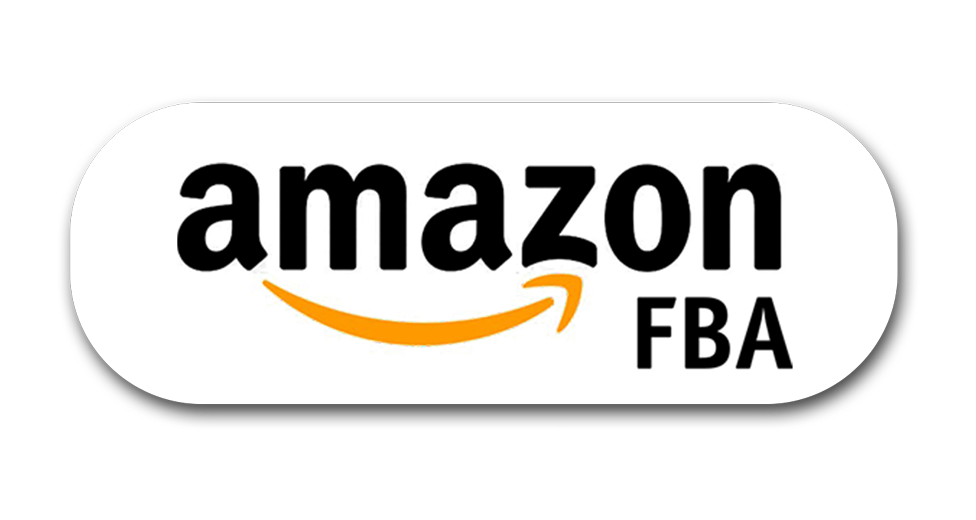
Before you finalize your listing, Amazon FBA provides one more opportunity to boost your discoverability through backend search terms. These keywords remain invisible to customers but help Amazon’s algorithm understand what searches should display your product. Think of backend search terms as your secret weapon. They capture traffic from keywords that didn’t fit naturally into your title or bullet points.
Use this space wisely by including relevant synonyms, common misspellings, and related terms that describe your product. However, avoid keyword stuffing or repeating terms that already appear in your visible content. Amazon’s guidelines specifically prohibit including competitor brand names. Focus exclusively on generic descriptive terms.
Once you’ve filled out your backend search terms, you’re ready for the moment of truth. Click “save and finish,” and boom, you now have a live listing on Amazon! Your product is officially available for the world to discover. This is both exciting and terrifying at the same time.
Moving Beyond Basic Setup
Creating the listing took barely any time when you follow this systematic approach. However, getting it live is only half the battle. Many sellers stop here and wonder why their sales remain disappointing. The truth is that a basic listing rarely converts well without optimization and ongoing refinement.
Stage Two: Creating a High-Converting Listing

Introduction to Conversion Optimization
Simply having your product listed on Amazon doesn’t guarantee sales. This is no different than printing business cards and expecting clients to magically appear. Your listing needs to actively convert the traffic it receives into paying customers. This requires strategic optimization based on data rather than guesswork. The difference between a listing that exists and one that thrives comes down to continuous improvement informed by real-world performance.
Rafael’s work with Pink Miracle perfectly illustrates this principle in action. When he started working with this brand, they were already ranking number one for their main keywords. This sounds like the ultimate success. However, their listing was actually holding them back from achieving the sales their ranking should have generated. Their images lacked impact and failed to connect emotionally with customers. The whole listing felt boring and outdated.
The transformation that followed demonstrates the incredible power of strategic listing optimization. By analyzing data, testing variations, and implementing improvements systematically, Rafael and his team turned a good listing into a great one. Sales didn’t just improve, they exploded. This proves that ranking is only part of the equation.
This second stage of listing development separates successful Amazon FBA sellers from those who struggle despite having good products. By following these three critical steps, you’ll transform your basic listing into a conversion machine. It will turn browsers into buyers consistently.
Step One: Improve Your Listing Quality
Every successful listing optimization begins with honest assessment of what’s working and what’s falling flat. Pink Miracle’s original listing suffered from several glaring problems that limited its conversion potential. The images weren’t effective at all. They failed to showcase the product’s benefits or create any emotional connection with potential buyers. Everything about the presentation felt generic and outdated. It seemed like no one had invested real thought into what customers wanted to see.
Identifying these weaknesses requires putting yourself in your customer’s shoes. You need to critically evaluate whether your listing would convince you to buy. Does your main image stand out when displayed alongside competitors? Do your bullet points address the specific concerns and desires of your target audience? Does your entire listing communicate quality, value, and trustworthiness?
Sometimes the problems are obvious, blurry photos, typos in the copy, or missing information that customers need to make a decision. Other times, the issues are more subtle. You might have a tone that doesn’t resonate with your audience or imagery that fails to differentiate you from competitors. Conducting this honest assessment can be uncomfortable, but it’s absolutely necessary for improvement.
Once you’ve identified the weaknesses in your listing, you can begin making strategic changes. However, improvements shouldn’t be based on random guesses about what might work better. Instead, successful optimization requires digging deep into your performance data. You need to understand exactly where customers are dropping off and why.
Step Two: In-Depth Product Analysis

Understanding your listing’s performance requires analyzing multiple data sources. Start with your PPC (pay-per-click) advertising campaigns. PPC advertising puts your product at the top of Amazon’s search results, but you pay a certain amount every time someone clicks on your listing. This creates valuable data about which keywords drive traffic and which ones convert into sales. It helps you refine your entire strategy.
When analyzing your PPC data, think carefully about your campaign goals. Consider how they align with your overall business objectives. Are you focused on building brand awareness, maximizing profit per sale, or capturing market share from competitors? Your goals should dictate your strategy. Your data analysis should always connect back to whether you’re achieving those goals effectively.
Mapping the Customer Journey
Equally important is mapping your customer journey to understand exactly where you’re winning or losing potential buyers. Pink Miracle’s customer journey analysis revealed specific touchpoints where customers were making purchase decisions. This allowed the team to optimize those critical moments. Understanding this journey means identifying every interaction a customer has with your listing. Track everything from first seeing it in search results through reading reviews and ultimately clicking the buy button.
Your sales cycle also deserves careful attention. You need to track the ups and downs of your sales over time while understanding who’s buying your product and why. Seasonal patterns, day-of-week variations, and longer-term trends all provide insights that inform smarter decisions. Additionally, analyzing whether your product appears for the keywords customers are actually searching becomes crucial. If people are searching for specific phrases and your product isn’t showing up, you’re leaving money on the table. By focusing on the most relevant keywords in titles, bullet points, and backend search terms, you create massive improvement in visibility and sales.
Step Three: Create and Test A/B Content Based on Data
Creating content based on data insights is important, but testing that content rigorously determines what actually drives results. Pink Miracle’s optimization included running more than 50 A/B tests across two different platforms. This generated a massive dataset that informed every decision. This commitment to testing rather than guessing separates amateur sellers from professionals who consistently win on Amazon.
A/B testing means creating two versions of something, whether an image, text overlay, or pricing structure, and measuring which performs better with real customers. Rafael’s team tested everything imaginable: lighting angles, text overlays, color shades, and countless other variables. Each test revealed what resonated with Pink Miracle’s specific audience. This allowed the team to fine-tune every detail systematically rather than relying on subjective opinions.
Implementing Comprehensive Changes
Based on all this testing and analysis, the team optimized Pink Miracle’s Amazon listing with comprehensive improvements. They added over 200 polar images, 20 hero images, premium plus content modules, and engaging infographics. The visual transformation was dramatic. Higher quality images generated significantly more clicks from shoppers browsing search results. This comprehensive approach to content creation ensures every element of the listing works together to drive conversions.
The results spoke for themselves. After uploading all the optimized content, Pink Miracle’s listing didn’t just look better, it performed dramatically better. Sales exploded because the optimization addressed real customer concerns and desires rather than implementing changes based on hunches. However, the story doesn’t end with creating and uploading great content. Testing means nothing if you don’t continuously track performance and adapt accordingly.
The Tracking Imperative: Don’t Set and Forget

Testing without tracking is like planning a road trip without checking a map. You’ll inevitably end up way off course. Many sellers make the mistake of optimizing their listing once, then assuming their work is done. However, market conditions change, competitors improve their listings, and customer preferences evolve. Continuous tracking allows you to spot problems early and capitalize on opportunities quickly.
Monitor your CTR (click-through rate) religiously. A dropping CTR indicates your main image or title isn’t grabbing attention effectively. When Rafael’s team noticed CTR declining for Pink Miracle, they immediately ran new A/B tests on the main image to boost those numbers back up. Similarly, tracking your CVR (conversion rate) reveals whether visitors who land on your listing are actually buying. If your CVR drops, something about your images, copy, or pricing is failing to convince customers. This requires immediate investigation and adjustment.
Key Metrics to Monitor
Your PPC performance provides another critical dataset. It encompasses metrics like ACOS (advertising cost of sales) and ROAS (return on ad spend). These numbers tell you whether your advertising dollars are generating profitable sales or simply draining your budget. Equally important is your organic performance, how well you rank when people search naturally without clicking ads. Strong organic rankings with good click-through rates, high conversion rates, plenty of sessions, and growing unit sales indicate a healthy, sustainable Amazon business.
After gathering all these insights, you must constantly update your content based on what the data reveals. This ongoing optimization never truly ends because Amazon’s marketplace remains in constant flux. The sellers who commit to continuous improvement consistently outperform those who create a listing once and hope for the best. Treating your listing as a living entity that requires regular care and feeding transforms your results over time. It turns modest success into extraordinary achievement.
Taking Your Amazon Journey Further
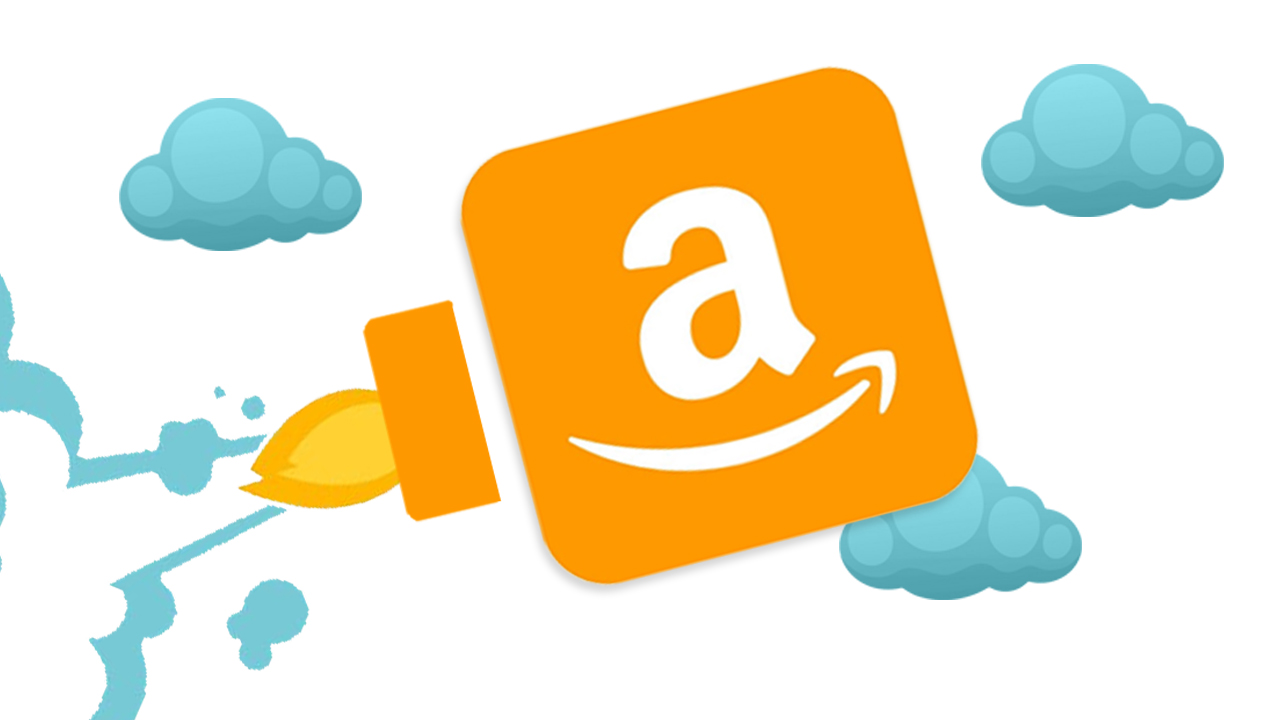
The Learning Curve Reality
Everything covered in this guide provides a solid foundation for creating and optimizing your Amazon listing. However, honestly, it’s just scratching the surface. Amazon FBA involves layers upon layers of complexity. You need to master inventory management, understand Amazon’s ever-changing algorithms, and navigate the competitive dynamics of your specific niche. The learning curve can feel overwhelming when you’re trying to figure everything out through trial and error.
Most successful Amazon sellers will tell you that their biggest breakthroughs came after investing in proper education. Stumbling around blindly rarely leads to success. The cost of mistakes on Amazon adds up quickly. Poor inventory decisions can tie up thousands of dollars. Ineffective advertising campaigns drain your budget with nothing to show for it. Mediocre listings simply sit there collecting dust instead of generating sales. Meanwhile, your competitors who understand the platform’s nuances continue pulling ahead.
The competitive landscape on Amazon has intensified dramatically in recent years. More sophisticated sellers are entering every category. What worked three years ago barely works today. Strategies that drive results now might be obsolete by next year. Staying ahead requires access to current, proven strategies rather than outdated information you find in random blog posts and YouTube videos.
So how do you master all of this without spending years making expensive mistakes? The answer lies in learning directly from experts who have already achieved the success you’re pursuing. These experts are actively teaching current strategies. Rather than reinventing the wheel, you can follow a proven roadmap. This takes you from beginner to successful seller in a fraction of the time it would take on your own.
The Passion Product Formula: Your Fast Track to Success

Travis has been building successful Amazon businesses for years. He’s condensed all that hard-won knowledge into the Passion Product Formula. This comprehensive training program is designed specifically to help you launch and grow your own Amazon FBA product. This isn’t just another generic course filled with outdated information. It’s a complete mentorship program that gives you everything you need to succeed on the platform.
The program includes over 100 step-by-step tutorials that walk you through every aspect of building an Amazon business. You’ll learn everything from finding profitable products to sourcing inventory to launching successfully to scaling sustainably. These aren’t vague theory lessons, they’re specific, actionable instructions you can implement immediately. Additionally, you get access to weekly Q&A calls where you can ask Travis questions about your specific situation. You’ll get personalized guidance on your unique challenges.
Complete Mentorship and Community Support
What truly sets the Passion Product Formula apart is the complete mentorship approach rather than just information delivery. You’re not left alone to interpret lessons and figure things out independently. You have support every step of your journey. The program community connects you with other sellers at various stages. This allows you to learn from their experiences and avoid their mistakes. This collaborative environment accelerates your learning and keeps you motivated when challenges arise.
Rafael himself learned many of his strategies from Travis’s channels. This directly contributed to his $238,000 in sales selling cookie dough bites. When experts like Rafael credit their success to learning from Travis, that speaks volumes about the quality and effectiveness of the training. The Passion Product Formula provides the most cost-effective path to launching a successful new product on Amazon. It helps you avoid the expensive mistakes most beginners make. There’s a link in the description to join the program and start your own Amazon success story.
Additional Resources
Beyond the Passion Product Formula, several other resources can accelerate your Amazon journey depending on where you need help. If your listing specifically needs expert optimization to boost sales, Sher Studio offers professional Amazon marketing services. They transform underperforming listings into conversion machines. As Rafael’s agency, they bring proven expertise in creating high-quality images, compelling copy, and strategic content that drives results.
Sher Studio handles everything from listing optimization to comprehensive sales growth strategies tailored to your specific product and niche. Because you’re reading this through Travis’s channel and Travis is Rafael’s friend, you’ll receive a special discount on their services. Simply use the link below or scan the QR code to book a consultation call and mention this article. Professional help isn’t just for major brands. Even small sellers can benefit from expert guidance that dramatically improves their results.
Professional Services and Free Training
If you need complete listing creation including photography, copywriting, and design work, FBA Creatives offers comprehensive services at reasonable prices. They can build your entire listing from scratch. They’ll even handle your packaging and logo design, creating a cohesive brand identity that stands out. Using the discount code Travis50 gives you 50% off their services. This makes professional help surprisingly affordable for new sellers.
For those who aren’t quite ready to invest in paid training or services, Travis offers a completely free 10-hour Amazon FBA course. This covers the fundamentals of selling on the platform. This free course provides tremendous value and helps you determine whether Amazon FBA is the right business model for you. You can explore the opportunity before making any financial commitments. And just for fun, if you want to try the actual chocolate chip cookie dough bites that helped Rafael build his $238,000 business, there’s a link in the description to purchase them yourself. They’re absolutely delicious!
Your Amazon Success Story Starts Now

Creating a high-converting Amazon listing isn’t magic, but it does require strategy, effort, and continuous optimization. Throughout this comprehensive guide, you’ve learned the complete two-stage process. First, you create a properly structured listing with optimized keywords, compelling photos, and persuasive copy. Then, you continuously improve that listing through data analysis, A/B testing, and strategic refinements. These aren’t just theoretical concepts. They’re proven strategies that Rafael used to generate over $238,000 in sales. They transformed Pink Miracle from a stagnant brand into a sales powerhouse.
The key takeaways bear repeating because they’re that important. Keywords are absolutely everything when it comes to being discovered on Amazon’s search engine. Your photos can make or break your listing before customers even read your title. Continuous testing and tracking are essential for sustained success. Learning from experts who’ve already achieved what you want saves you enormous amounts of time and money. Every successful Amazon seller has implemented these principles consistently. You can too.
Rafael’s success story proves that ordinary people can build extraordinary businesses on Amazon when they follow the right strategies. He started from scratch with no e-commerce experience, learned from experts like Travis. He built a six-figure business selling cookie dough bites. If he can do it, you absolutely can too with the right guidance and commitment to continuous improvement.
Your Amazon success story starts with a single listing. Make sure that listing is built on the solid foundation of proven strategies rather than guesswork and hope. Join the Passion Product Formula to access comprehensive training, ongoing support, and a community of sellers who are building their own Amazon businesses. Check out Sher Studio if you need expert help optimizing your specific listing for maximum conversions. Or start with Travis’s completely free 10-hour course if you’re just beginning to explore whether Amazon FBA is right for you. Whatever you choose, take action today. Your future self will thank you for starting this journey now rather than wishing you had started years from now.
Frequently Asked Questions
How much does it cost to start selling on Amazon FBA?
Starting an Amazon FBA business typically requires $2,000-$5,000 in initial investment. Some sellers start with less and others invest significantly more. Your costs include product inventory (usually the largest expense), Amazon seller account fees ($39.99/month for a professional account), UPC codes from gs1.org, product photography, and initial advertising budget. Many successful sellers recommend starting with at least $3,000. This gives you enough runway to order adequate inventory and run effective advertising campaigns. Remember Rafael’s pricing rule: sell for at least 3x your product cost to ensure healthy profit margins that cover all these expenses.
How long does it take to start making sales on Amazon?
Most new Amazon listings start generating sales within 2-4 weeks of going live. This timeline varies significantly based on your niche’s competitiveness, your listing quality, and your advertising strategy. Products with optimized listings and active PPC campaigns typically see sales faster than those relying purely on organic traffic. However, building substantial, sustainable sales usually takes 3-6 months. You need time to accumulate reviews, improve your listing based on data, and establish your organic rankings. Patience combined with active optimization produces the best results rather than expecting overnight success.
Do I need to use FBA or can I fulfill orders myself?
You can choose either FBA (Fulfillment by Amazon) or FBM (Fulfillment by Merchant). Each has distinct advantages. Rafael chose FBA because Amazon handles all the storage, packing, shipping, and customer service. Plus, FBA products are Prime-eligible which significantly increases sales. However, FBM makes sense if you have limited capital for inventory, want complete control over packaging, or sell oversized items with prohibitive FBA fees. Many sellers start with FBA because the Prime badge typically generates enough additional


